-
 Bitcoin
Bitcoin $109,459.7682
2.44% -
 Ethereum
Ethereum $2,598.6052
6.29% -
 Tether USDt
Tether USDt $1.0003
0.00% -
 XRP
XRP $2.2734
3.95% -
 BNB
BNB $661.4886
1.58% -
 Solana
Solana $155.4825
4.35% -
 USDC
USDC $0.9999
-0.02% -
 TRON
TRON $0.2838
1.04% -
 Dogecoin
Dogecoin $0.1740
8.25% -
 Cardano
Cardano $0.6047
9.04% -
 Hyperliquid
Hyperliquid $40.2302
6.50% -
 Sui
Sui $2.9863
10.05% -
 Bitcoin Cash
Bitcoin Cash $509.5786
0.60% -
 Chainlink
Chainlink $13.8156
6.03% -
 UNUS SED LEO
UNUS SED LEO $9.0142
0.69% -
 Avalanche
Avalanche $19.0337
8.68% -
 Stellar
Stellar $0.2438
5.17% -
 Toncoin
Toncoin $2.9012
3.59% -
 Shiba Inu
Shiba Inu $0.0...01210
6.20% -
 Litecoin
Litecoin $90.0882
7.05% -
 Hedera
Hedera $0.1597
8.53% -
 Monero
Monero $326.3340
2.88% -
 Polkadot
Polkadot $3.6365
9.32% -
 Bitget Token
Bitget Token $4.6162
2.72% -
 Dai
Dai $1.0001
0.00% -
 Ethena USDe
Ethena USDe $1.0002
-0.01% -
 Uniswap
Uniswap $7.6403
10.47% -
 Pepe
Pepe $0.0...01060
12.03% -
 Aave
Aave $281.3664
7.56% -
 Pi
Pi $0.4992
1.76%
What is the EVM (Ethereum Virtual Machine)?
The Ethereum Virtual Machine (EVM) executes smart contracts across decentralized nodes, ensuring secure and consistent computation on the blockchain.
Jul 03, 2025 at 07:00 pm
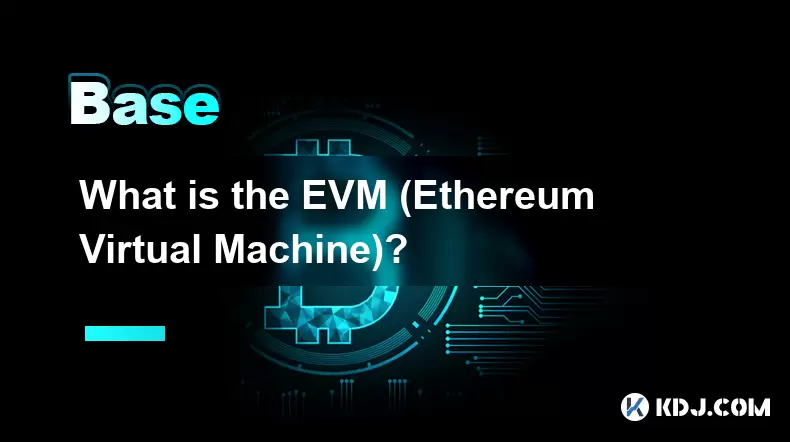
Understanding the Core Concept of EVM
The Ethereum Virtual Machine (EVM) is a decentralized, sandboxed virtual machine that executes smart contracts on the Ethereum blockchain. It serves as the runtime environment for every Ethereum node, ensuring that all transactions and contract executions are processed uniformly across the network. The EVM is critical to Ethereum’s functionality, allowing developers to deploy and run self-executing code without relying on a centralized authority.
One of the most notable features of the EVM is its Turing-completeness, which means it can theoretically solve any computational problem given enough time and memory. However, due to practical constraints like gas limits and block size, real-world execution is bounded. This balance allows for flexibility while maintaining network security and efficiency.
How Does the EVM Operate?
At its core, the EVM processes bytecode — low-level machine instructions derived from high-level programming languages like Solidity or Vyper. When a developer writes a smart contract in one of these languages, the code is compiled into bytecode that the EVM can interpret and execute.
Each node in the Ethereum network runs an instance of the EVM. When a transaction is sent to the network:
- The transaction is validated by miners or validators.
- The EVM interprets the associated bytecode.
- Execution results in changes to the Ethereum state, such as updating account balances or modifying contract storage.
These operations are deterministic, meaning that regardless of which node performs them, the outcome will be identical. This determinism ensures consensus among nodes and upholds the integrity of the Ethereum ledger.
The Role of Gas in EVM Execution
Gas is a fundamental concept in the EVM ecosystem. It acts as a metering mechanism that prevents abuse of network resources and compensates miners or validators for their computational efforts. Every operation executed within the EVM consumes a specific amount of gas, determined by the complexity and resource intensity of the action.
For example:
- Simple arithmetic operations cost minimal gas.
- Storage modifications or external calls to other contracts consume significantly more gas.
Users must specify a gas limit and a gas price when submitting a transaction. If the transaction exceeds the gas limit during execution, it is reverted, but the gas fees are still charged. This system incentivizes efficient coding practices and helps maintain network stability.
EVM Architecture and Memory Management
The EVM operates with three primary types of memory:
- Stack: A LIFO (Last In First Out) structure used for storing temporary values during computation. Each stack item is limited to 256 bits, and the maximum stack depth is 1024 items.
- Memory: A volatile byte array used for data manipulation during execution. It expands dynamically as needed, but this expansion incurs additional gas costs.
- Storage: A persistent key-value store where contract data is saved between transactions. Storage access is expensive in terms of gas due to its permanence.
Additionally, the EVM maintains a program counter, tracks the current context of execution, and manages call data passed between contracts. These architectural components ensure seamless and secure execution of complex logic across distributed systems.
Smart Contract Deployment and Interaction
Deploying a smart contract involves sending a transaction with no recipient address and containing the contract creation code. Once mined, the EVM initializes a new contract account, stores the deployed bytecode, and assigns it a unique address.
Interacting with a deployed contract typically involves:
- Sending a transaction to the contract's address with encoded function calls and parameters.
- Triggering internal EVM operations based on the contract's logic.
- Returning output data or modifying the blockchain state accordingly.
Each interaction must adhere to the rules enforced by the EVM, including proper signature verification, sufficient gas availability, and correct data formatting. Developers often use tools like Remix IDE, Truffle, or Hardhat to write, compile, and test smart contracts before deployment.
EVM-Compatible Blockchains and Forks
Due to the popularity and robustness of the EVM, many other blockchains have adopted EVM compatibility to enable cross-platform development and migration of dApps. Networks like Binance Smart Chain, Polygon, and Avalanche C-Chain implement the EVM specification, allowing developers to reuse existing Ethereum tooling and codebases.
Some projects even create forks of the EVM to customize behavior for specific use cases. While this fosters innovation, it also introduces challenges related to network upgrades, consensus mechanisms, and interoperability. Understanding the nuances of different EVM implementations is crucial for developers aiming to build scalable and portable decentralized applications.
Frequently Asked Questions
What languages can be used to write EVM-compatible smart contracts?
Popular languages include Solidity, Vyper, and Yul. Solidity is the most widely adopted due to its rich feature set and strong community support. Vyper emphasizes simplicity and security, while Yul is a lower-level intermediate language suitable for optimization-focused developers.
Is the EVM only used on the Ethereum mainnet?
No, many EVM-compatible chains exist, including Binance Smart Chain, Polygon, and Arbitrum. These networks allow developers to deploy Ethereum-based contracts without rewriting code, facilitating broader adoption and scalability solutions.
How does the EVM handle errors during execution?
If an error occurs during execution, such as insufficient gas or invalid opcode usage, the EVM reverts all state changes made during that transaction. However, the gas consumed up to that point is not refunded, serving as compensation for the computational effort already spent.
Can I run an EVM locally for testing purposes?
Yes, you can use local development environments like Ganache, Hardhat Network, or Anvil (from Foundry) to simulate an EVM environment. These tools provide fast feedback loops and debugging capabilities without requiring mainnet deployment.
Disclaimer:info@kdj.com
The information provided is not trading advice. kdj.com does not assume any responsibility for any investments made based on the information provided in this article. Cryptocurrencies are highly volatile and it is highly recommended that you invest with caution after thorough research!
If you believe that the content used on this website infringes your copyright, please contact us immediately (info@kdj.com) and we will delete it promptly.
- PEPE Price Surges Amid Golden Cross: Memecoin Market Heats Up!
- 2025-07-03 23:10:15
- Cooking.City Launches on Solana: A Recipe for On-Chain Success?
- 2025-07-03 23:10:15
- Bitcoin's Wild Ride: ETF Performance, Unemployment Data, and a $90K Dip?
- 2025-07-03 22:35:14
- Blue Gold, Blockchain, and Gold Tokens: A New Era for Digital Assets?
- 2025-07-03 22:35:14
- Davidovich Fokina's Wedding Album: A Tennis Star's Fairytale
- 2025-07-03 23:15:12
- Crypto Gems with 10x Potential: Is Mutuum Finance the Next DeFi Sensation?
- 2025-07-03 23:20:13
Related knowledge

What is open interest in derivatives?
Jul 03,2025 at 02:49pm
Understanding Open Interest in DerivativesOpen interest is a critical metric used in the cryptocurrency derivatives market, particularly when analyzing futures and options contracts. It represents the total number of outstanding contracts that have not been settled or closed by either party involved. Unlike trading volume, which counts all trades made i...
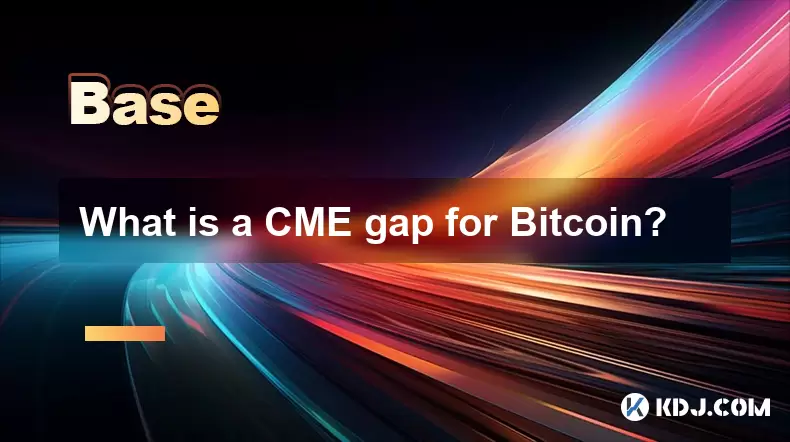
What is a CME gap for Bitcoin?
Jul 03,2025 at 05:49pm
Understanding the Concept of a CME GapA CME gap refers to a discrepancy in price between the closing price of Bitcoin on the Chicago Mercantile Exchange (CME) and its opening price when trading resumes. This phenomenon occurs because the CME operates during specific hours, typically aligned with traditional market hours, while cryptocurrency markets ope...
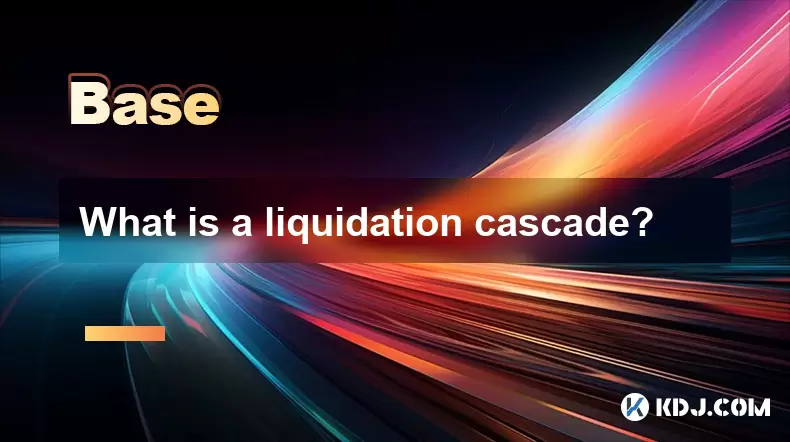
What is a liquidation cascade?
Jul 03,2025 at 07:15am
Understanding the Concept of LiquidationIn the realm of cryptocurrency trading, liquidation refers to the process by which a trader's position is automatically closed due to insufficient funds to maintain the leveraged trade. This typically occurs when the market moves against the trader's position and their account equity falls below the required maint...
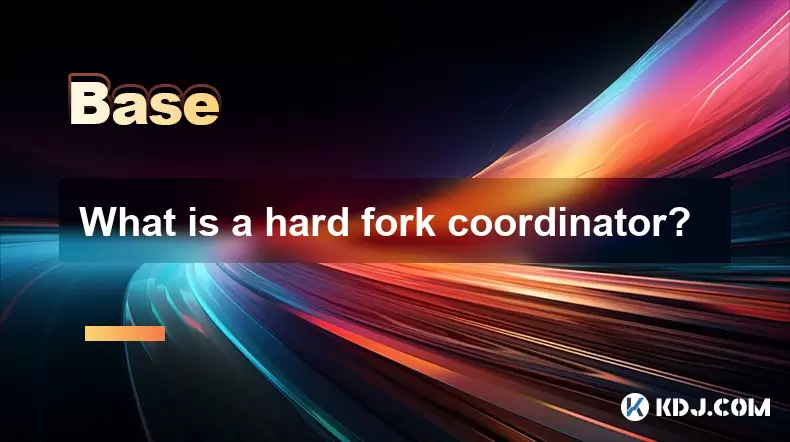
What is a hard fork coordinator?
Jul 03,2025 at 12:42pm
Understanding the Role of a Hard Fork CoordinatorIn the world of blockchain and cryptocurrencies, a hard fork coordinator plays a critical role during major network upgrades. A hard fork is a significant change to a blockchain’s protocol that makes previously invalid blocks or transactions valid (or vice versa). This type of upgrade requires all nodes o...
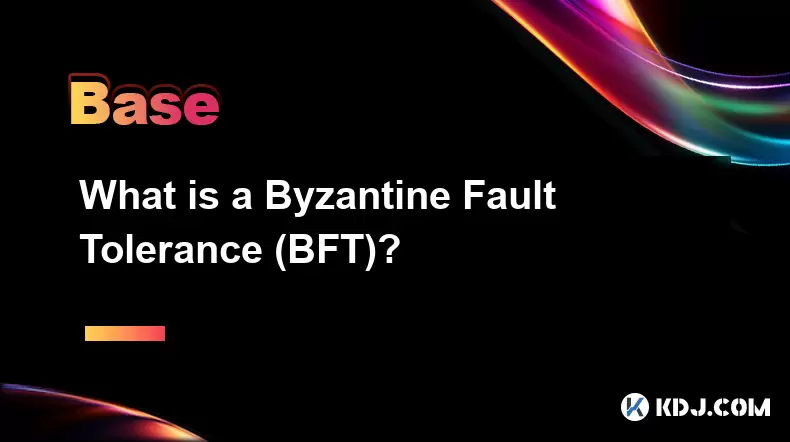
What is a Byzantine Fault Tolerance (BFT)?
Jul 03,2025 at 11:49am
Understanding the Concept of Byzantine Fault ToleranceByzantine Fault Tolerance (BFT) is a critical concept in distributed systems, particularly within the realm of blockchain technology and cryptocurrencies. It refers to the ability of a system to continue functioning correctly even when some components fail or behave maliciously. The term originates f...
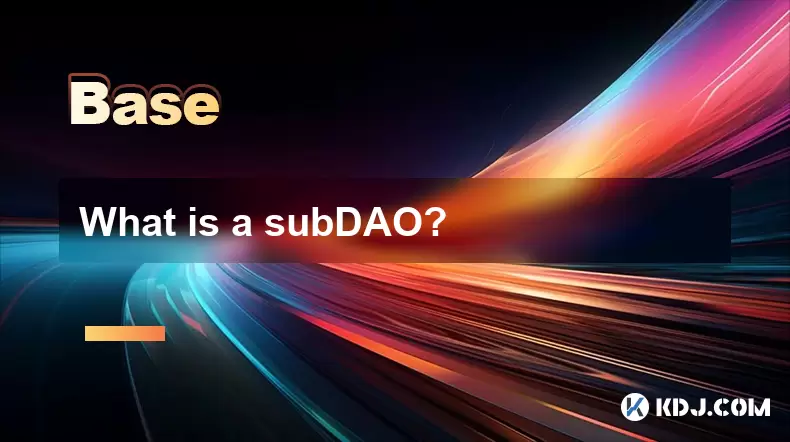
What is a subDAO?
Jul 03,2025 at 09:36am
Understanding the Concept of SubDAOA SubDAO, short for Sub-Decentralized Autonomous Organization, is a specialized entity that operates under the umbrella of a larger DAO (Decentralized Autonomous Organization). It functions with its own set of rules, governance mechanisms, and tokenomics while remaining aligned with the overarching goals of the parent ...

What is open interest in derivatives?
Jul 03,2025 at 02:49pm
Understanding Open Interest in DerivativesOpen interest is a critical metric used in the cryptocurrency derivatives market, particularly when analyzing futures and options contracts. It represents the total number of outstanding contracts that have not been settled or closed by either party involved. Unlike trading volume, which counts all trades made i...

What is a CME gap for Bitcoin?
Jul 03,2025 at 05:49pm
Understanding the Concept of a CME GapA CME gap refers to a discrepancy in price between the closing price of Bitcoin on the Chicago Mercantile Exchange (CME) and its opening price when trading resumes. This phenomenon occurs because the CME operates during specific hours, typically aligned with traditional market hours, while cryptocurrency markets ope...

What is a liquidation cascade?
Jul 03,2025 at 07:15am
Understanding the Concept of LiquidationIn the realm of cryptocurrency trading, liquidation refers to the process by which a trader's position is automatically closed due to insufficient funds to maintain the leveraged trade. This typically occurs when the market moves against the trader's position and their account equity falls below the required maint...

What is a hard fork coordinator?
Jul 03,2025 at 12:42pm
Understanding the Role of a Hard Fork CoordinatorIn the world of blockchain and cryptocurrencies, a hard fork coordinator plays a critical role during major network upgrades. A hard fork is a significant change to a blockchain’s protocol that makes previously invalid blocks or transactions valid (or vice versa). This type of upgrade requires all nodes o...

What is a Byzantine Fault Tolerance (BFT)?
Jul 03,2025 at 11:49am
Understanding the Concept of Byzantine Fault ToleranceByzantine Fault Tolerance (BFT) is a critical concept in distributed systems, particularly within the realm of blockchain technology and cryptocurrencies. It refers to the ability of a system to continue functioning correctly even when some components fail or behave maliciously. The term originates f...

What is a subDAO?
Jul 03,2025 at 09:36am
Understanding the Concept of SubDAOA SubDAO, short for Sub-Decentralized Autonomous Organization, is a specialized entity that operates under the umbrella of a larger DAO (Decentralized Autonomous Organization). It functions with its own set of rules, governance mechanisms, and tokenomics while remaining aligned with the overarching goals of the parent ...
See all articles

























































































